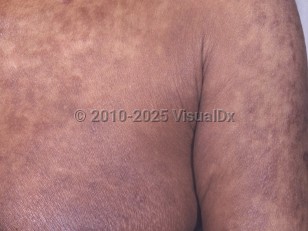Angioimmunoblastic lymphadenopathy
Alerts and Notices
Important News & Links
Synopsis

Patients often present with acute onset of symptoms with lymphadenopathy, fevers, unintentional weight loss, night sweats, and hepatomegaly or splenomegaly. Approximately 20%-50% of patients present with cutaneous findings, including an exanthematous eruption, urticaria, and infiltrated papules and nodules. Generalized pruritus may be an early symptom. AITL can mimic an immune system disorder with many similar signs such as joint pain, swelling, ascites, pleural effusion, and/or hemolytic anemia. It is often difficult to diagnose for this reason. Lymph node biopsy demonstrates a polymorphous infiltrate with proliferation of follicular dendritic cells and high endothelial venules.
Prognosis of AITL is often poor with a high mortality rate of 50%-75%. The 5-year median survival rate is 32%, which varies depending on certain prognostic factors.
Codes
C86.50 – Angioimmunoblastic T-cell lymphoma not having achieved remission
SNOMEDCT:
52097008 – Angioimmunoblastic lymphadenopathy
Look For
Subscription Required
Diagnostic Pearls
Subscription Required
Differential Diagnosis & Pitfalls

Subscription Required
Best Tests
Subscription Required
Management Pearls
Subscription Required
Therapy
Subscription Required
Drug Reaction Data
Subscription Required
References
Subscription Required
Last Updated:02/26/2020

